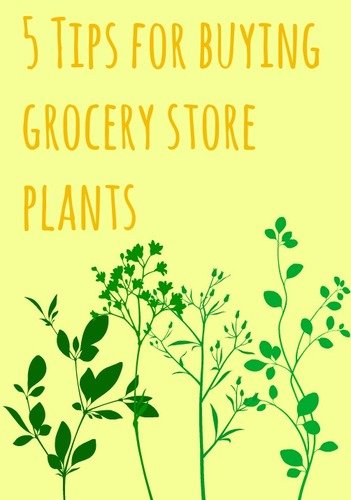Here are 5 tips for navigating the garden center waters.
- Go local for the best variety I like to buy my plants from a small, family-owned nursery for several reasons. First, I like to spend my money in my local community. I also trust the folks who run the small nursery and know that I can come to them with questions and I’ll be given good advice and suggestions. They also propagate and grow many of the plants they sell, and they offer only what will grow in my climate. In addition, they have unusual varieties that aren’t offered elsewhere locally. Sure, I may pay a little more for my plants, but I feel that I receive extra time and attention there, and the plants I buy are always strong and healthy.
- Shop the grocery and big box stores for the basics My neighbors are the exact opposite in terms of where they prefer to shop. They like to visit big box garden centers for reduced prices. I must say their yard always looks fabulous and they rarely lose a plant. They don’t really care about the unusual varieties, preferring instead the tried and true. Large garden centers are wonderful if you’re on a tight budget. Also, if you know your perennials from your annuals and your snapdragons from your petunias, you’ll do just fine buying plants at a large garden center. However, remember that big box stores ship in their plants from elsewhere and they may not be the right plant for your climate.
- Know your hardiness zone Are you a 6? A 3? Do you even know what this number means? It makes a huge difference in your plant’s survival. While most big box stores and groceries will only stock what will grow in a particular area, these guys are not always gardeners and you should still do your own research before you buy, especially to make sure you are buying the right plant for the right place. For example, do you have a shady patch that needs a perennial? The more specific you are in your needs, the better you’ll fare because you won’t end up bringing home a plant that you’ll have to place in less than ideal conditions.
- Conduct a plant inspection Whether buying from a nursery or grocery, always do this top-to-bottom check: If you see yellow or brown leaves, spotty leaves, or tiny insects on the plant, don’t bring it home. Check the undersides of the leaves too! If the plants seem wilted and droopy, they are suffering from too little water and are going to be stressed. Don’t forget to check the roots. If you can easily tip the plant from the container, look to see if the plant is root-bound (are the roots thick and wrapped around and around the plant)? Yet another reason to steer clear and choose a healthier plant.
- Interview the staff If the folks at one garden center are clueless, it might be a good idea to buy elsewhere or at the very least go home first and do a little bit of research on your own before you spend your money. Do you think grocery store plants are just as good as the stock from the nursery? Image via Shari Altman


![]()